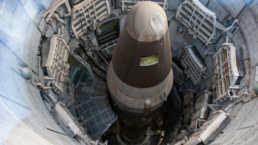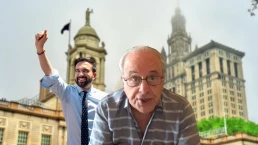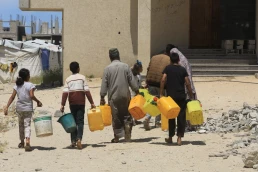Upon adoption in the General Assembly in December, this resolution will pave the way for the long and hard process of information gathering and needs appraisal in affected states, followed by actual steps to assist victims and assess and remediate contaminated environments.
By Ivana Nikolić Hughes and Christian Ciobanu, Bulletin of the Atomic Scientists
In contrast with the grandeur of the General Assembly Hall, the uplifting design of the Trusteeship Council room, and the stunning circular table in the Security Council Chamber, Conference Room 4 at the UN Headquarters is modest and unassuming. And yet, magic can happen there. When the heads of state are long gone and even the ministers have departed New York, diplomats push forward agendas to advance international cooperation on any number of international issues. They give statements, engage in debates publicly and privately, and vote for resolutions and more, often late into the night.

A kind of diplomatic magic took place last Friday night. Voting on a series of resolutions in what is referred to as the “nuclear weapons cluster” of the United Nations General Assembly’s First Committee (which deals with disarmament and international security), diplomats considered for the first time a resolution entitled: “Addressing the Legacy of Nuclear Weapons: Providing Victim Assistance and Environmental Remediation to Member States Affected by the Use or Testing of Nuclear Weapons.” The first such victims came into being when the United States conducted its first nuclear weapons test in New Mexico and then used nuclear weapons in attacks on Hiroshima and Nagasaki in the summer of 1945.
But nuclear explosions continued over the decades and around the world, in the form of nuclear weapon tests. The victim counts are easily in the millions.
Recent Posts
“Arrest Now, Ask Questions Later”: Why Did L.A. ICE Agents Arrest and Jail U.S. Citizen Andrea Velez?
July 3, 2025
Take Action Now “They didn’t have vests that said ICE or anything. Their cars didn’t have license plates. … Just because of the color of our…
Trump’s Big, Beautiful Bill Is Naked Class War
July 3, 2025
Take Action Now Trump’s “Big, Beautiful Bill” trades tax cuts on millionaires for the dissolution of society.By Hamilton Nolan, In These Times…
Mayor Mamdani’s First Day, A Zero Hour Conversation With Richard Wolff
July 2, 2025
Take Action Now If elected, what would Mayor Mamdani do on his first day in City Hall? How would a democratic socialist govern as a big-city mayor?……
The U.S. Is Funding A Bloodbath At Gaza Aid Centers
July 2, 2025
Take Action Now The admin just gave $30M to GHF, the organization at the center of charges that Israel is weaponizing assistance and shooting at…




